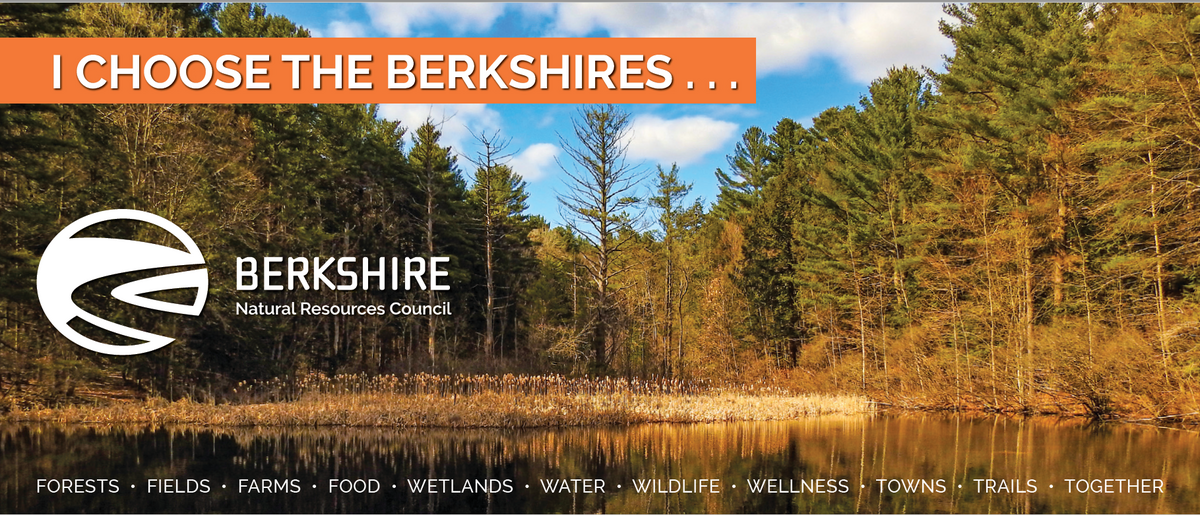Your Spring Newsyletter

The other day, a pair of foxes ran through the back yard at BNRC HQ.
The staff meeting stopped short, and we all leapt out of our seats to watch these beautiful creatures sniff and explore, their tails impossibly fluffy, their coats dark and full.
It was a wonderful sight.
I hope we never lose our sense of wonder. Days at the BNRC office may be filled with appraisals and legal contracts, policies and planning. But we never forget why we’re here.
Still, sometimes it’s really fun, and really interesting, to get down into the weeds. The WHY is always the most important thing. But the HOW can be pretty fascinating.
Right now, BNRC staff conservation experts are building a geospatial model. I want to explain to you how incredibly cool it is.
A geospatial model is a high-tech mapping system, using Geographic Information Systems (GIS). We’ve used GIS for decades—it’s how we create the maps that show the various features of the parcels or landscapes we’re protecting and stewarding. But now we’re taking it to the next level.
BNRC can do this because of donors—folks like you—who make all things BNRC possible.
Many organizations—the Commonwealth of Massachusetts, The Nature Conservancy, and dozens of others—have gathered highly detailed data that can be added to a basic parcel map in layers.
GIS data not only enables us to view satellite imagery—similar to Google maps—but also provides more detailed data to inform us about conservation values like forest habitat types, stream and wetland locations, and important farmland soils.
As we get deeper into developing the BNRC strategic conservation plan, this model will enable us to ask complicated questions, and get answers that will help guide donor-funded conservation efforts.
Questions like:
- What parcels or landscapes are most important to protect, to mitigate the impact of increasingly powerful storms?
- How many parcels can be conserved within walking distance of urban areas?
- Where are the most highly endangered and sensitive plant and animal species? What are the greatest threats to them?
- Which landscapes are doing the most to sequester carbon and how can we best manage them to promote climate resilience?
- As part of a much larger landscape that stretches from the Appalachians to Maine, what’s most important to know about where our efforts fit in?
And many others.
Not all the data we might like to analyze exists yet—data on farmland is limited.
That’s where BNRC staff and BNRC donors work in tandem . . .
Together, we can contribute to new layers through BNRC’s own work and research—research done by the only land trust that works across all of the Berkshires, and only the Berkshires.
All this work will be open source. So we are participating in a giant community of researchers and conservationists to use science, data, and technology for good (yes, that’s still a thing).
Having this data will help in one of the more common conversations we have, with people who are understandably worried that we’re going to conserve “too much” land and leave too little on the tax rolls, or available for economic development.
This geospatial tool helps target and focus, so we know which land is most important. That leads to a deeper understanding of which land is best left available for housing and other community needs.
By the way, about those foxes I saw:
A day or two after they ran through our yard, a wildlife rehabilitator I follow on Facebook posted a fascinating article about foxes. Right now, it’s denning season—between the end of March and early April, a mother fox will give birth to 4-5 kits.
They often choose den sites close to people, away from predators like coyotes. So, you might see foxes under your porch, shed, or garage.
The kits won’t leave the den at all until they’re about a month old, and by the end of the summer they’ll leave the den for good.
If you see the parents around, they’re probably hunting to feed the babies. No need to move or relocate them—they won’t harm your pets. Just enjoy them from afar and appreciate the wonders of nature!
One more thing:
I try to get up from my desk and get myself out talking to people about BNRC as often as I can—to listen to people’s ideas and concerns about the Berkshires, the land, and the work that we all do together through BNRC. (I welcome your questions and comments, always!)
Recently, I have heard a few questions over and over again, and, if there’s one thing I’ve learned, it’s that if a few people are asking the same question, a lot of people are thinking it.
Some people have asked me if all BNRC cares about these days is trail building, recreation and access. Has BNRC given up on land conservation?
Others have wondered whether we’re still working on The High Road, or if BNRC is just trying to conserve as many acres as it can.
(In other words, some have the exact opposite perception of what’s going on with BNRC!)
Still others question why BNRC works so hard to promote access to its trails, when they’re already free.
The answer to the first two questions is that both conservation and trails continue to be BNRC’s highest priorities. With help from that geospatial model I described, we’ll be able to strategically pinpoint the most important lands to conserve, and speed up efforts.
It will also help guide where trails should go, and where they should not. A tremendous amount of trail planning is underway right now, much of it focused on the next 5-10 years of The High Road. I’m really looking forward to sharing it with you over the next few months.
As those plans develop, and before creating any new trail networks, we’ll be able to review the model for sensitive habitats. In fact, trails are key to helping keep humans away from sensitive habitat.
And what about the third question, “Why do we need to promote access?”
Have you ever heard the phrase “If you know, you know”? A corollary is that “If you know, you might not realize that some people don’t know.” It is important to BNRC that everyone has an opportunity to enjoy the outdoors, so we want to make sure everyone knows that these trails and lands are here for them, for free.
BNRC donors and volunteers make this possible.
BNRC staff engaged in conversations with partner organizations (like Latinas413, Unpaved Trails for All, Berkshire Family Hikes, the Berkshire Immigrant Center, Berkshire Language Management, DEI Outdoors, and the Massachusetts Department of Conservation and Recreation) to understand the needs for sharing information on how to get outside easily and safely.
With these partners and others, and with the help of donors, BNRC created two print and digital resources: “Everybody Can Hike / ¡Todos Pueden realizar Una Caminata!,” and “Berkshire County Trails for All / Condado De Berkshire Senderos Para Todos.” Check out the English language versions using the codes at the bottom of this letter!
Because of its partners, community members, and you, BNRC makes progress every day on conserving the Berkshire outdoors, protecting wildlife, supporting local farmers, and enhancing climate resilience in our landscape.
BNRC is donor funded, so please consider a donation to make all of the above happen, and more.
And if you’ve got questions or ideas, let’s connect! (Or just send photos of the wildlife you’re seeing in your backyard or around the Berkshires.)
Yours truly,

Jenny Hansell
President
P.S. Want to see more of the land, wildlife, farms, and outdoor access that BNRC donors protect every day? Check out Everyone Can Hike and Berkshire County Trails for All using the QR codes below. BNRC donors make all this possible. You can be a part of the BNRC donor team at bnrc.org/donate. There are many ways to give. Please look for the one that’s perfect for you!
